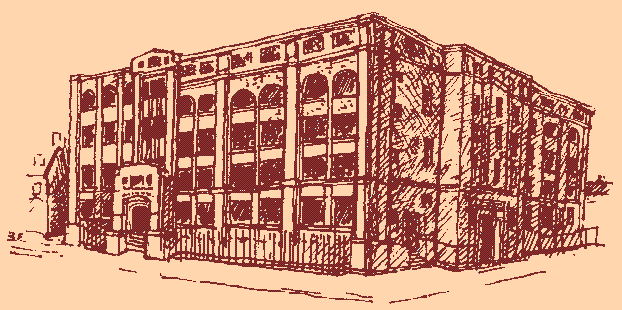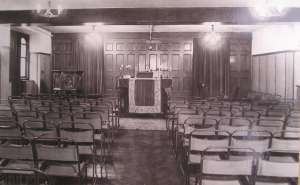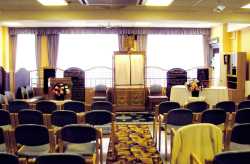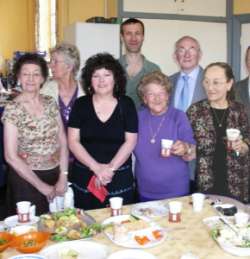
The Synagogue started in 1919 in the Youth Club and Settlement in 26a Betts Street in the area of St Georges, and was originally called The St George's Settlement Synagogue. The founders were Basil and Rose Henriques. The Synagogue was the only congregation to be affiliated to both the Reform and Liberal movements in Great Britain. In 1929, it moved to a large building in Berners Street off Commercial Road.

The new building was known as the Bernhard Baron Settlement. By the front door of the building, which has now been converted into flats, there is a stone plaque stating that the building was dedicated to the memory of those members of the West London Synagogue and the Liberal Jewish Synagogue who lost their lives in the first World War. (The road has now been renamed Henriques Street.) The Ner Tamid, perpetual light, which still hangs in front of the Ark at the Stepney Branch, is dedicated to the memory of Leonard Stern who was killed in WW1. Leonard Stern was a club manager in the Boys Club founded by Basil Henriques, and the son of Rev. J.F.Stern the minister of the East London Synagogue (United Synagogue, Orthodox) in Rectory Square.
 |
In 1929, the congregation produced its own prayer book and Rose Henriques set various passages from this book to existing music. The congregation therefore had a unique form of service. Some of this is still preserved at the services at the Stepney branch. At first the services tended to be rather anglicised; but not as much as some Liberal and Reform Synagogues of that period. Over the years rather more Hebrew has been introduced into the services. The use of English followed an old Jewish tradition going back to the time of the Mishnah (200 C.E.), and similar practices still exist in both Orthodox and Reform services today.
Basil Henriques used to preach at services and Rose Henriques formed a choir from the girls at the club. She accompanied them on the organ, another traditional practice, which was dropped by some Jewish congregations. The services attracted so many worshippers that for some of them it was necessary to hire the Whitechapel Art Gallery.
WORLD WAR 2.
The Bernhard Baron Settlement survived the bombing in WW2, where it sometimes provided shelter and served as a First Aid Post and as an Air Raid Wardens post . The minister and choir used to visit local air raid shelters on Friday nights to conduct Sabbath Eve services for those who slept there during the Blitz. The congregation was one of the 6 original Reform Synagogues which founded the R.S.G.B. in 1942. Just after the second World War, The Settlement claimed to be the third largest non-Orthodox Synagogue in the country. But times were changing, and Jews began to leave the East End for more prosperous areas. Numbers dwindled. The Bernhard Baron Settlement building was sold. The youth clubs moved to Southgate area of North London. The Synagogue moved to the Brady Club and Settlement. |
EAST END SERVICES CONTINUE.
When Brady closed, we came to the present site at what was the Stepney Jewish Girls Club, but which is now owned by Jewish Care. In 1997 we merged with South West Essex Reform Synagogue. The offices moved to Newbury Park; but it was decided to keep services going in the East End while there was still a need for them. Since the merger, we have had no problems with getting a Minyan. About 70 people usually attend the Communal Seder, we naturally get many more at the High Holy Days. Our Communal Sukkah is visited by many who attend the Stepney Jewish Day Centre.
 |
Rabbi Lawrence Rigal, January 2008.